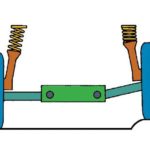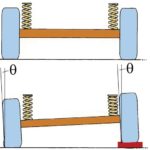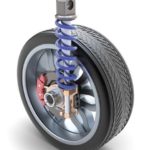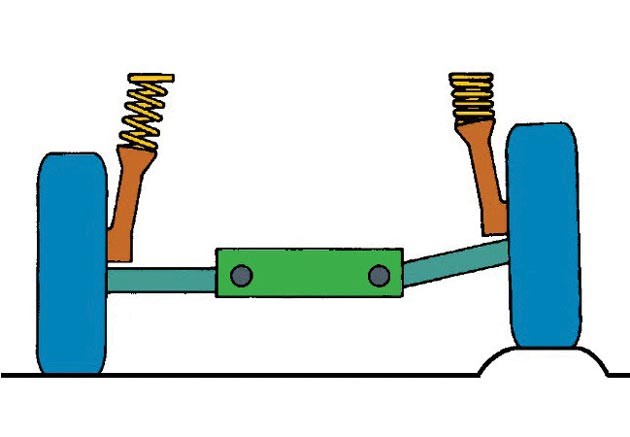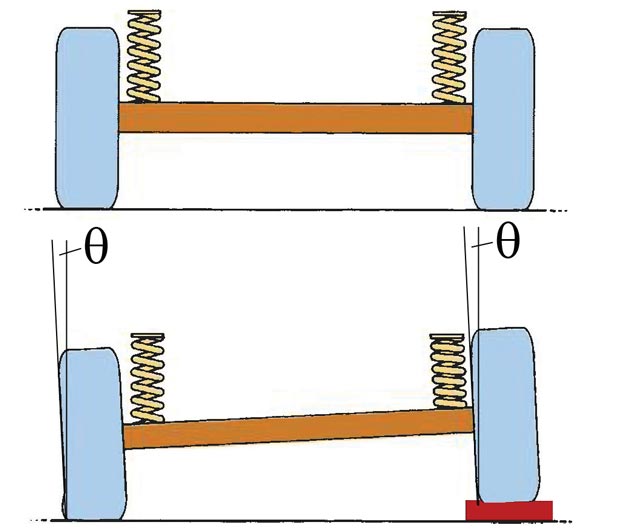Suspension geometry
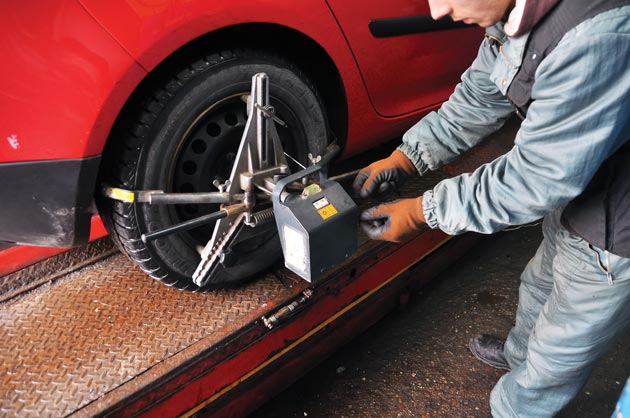
Suspension geometry
We often forget how important angles are when it comes to driving, and it's time to remind ourselves
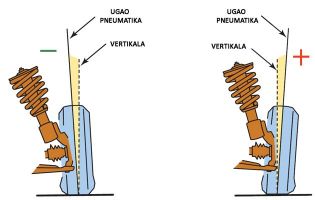
Figure 1. Negative and positive slope of the wheels
The safety, handling and stability of a vehicle depends to a large extent on the design of the rims, tires, suspension and steering systems that need to function in harmony. Suspension geometry is, by definition, an angular dependence between the surface of the substrate and the elements of the suspension system, steering and wheels of the vehicle. When adjusting the geometry of the suspension, the angles at which the wheels of the vehicle are located are measured and adjusted according to the corresponding values defined by the constructor. Adjustment is made by moving the various elements of the suspension and control system.
Properly adjusted suspension geometry allows the wheels to be rotated without slipping, locking and combing on different types of substrates. Proper alignment of the suspension geometry enables safe driving, good handling, longer tire life, reduced fuel consumption and less load on the suspension and control system elements. The alignment of the suspension geometry should be checked when installing new tires or elements of the suspension and control system. If excessive tire wear is observed, the geometry of the suspension geometry must also be checked. Disruption of geometry adjustment occurs when changing the distance of the vehicle from the ground, due to wear or damage to the elements of the suspension system when striking a solid obstacle (impact hole, curb, etc.).
There are currently two basic ways to adjust the suspension geometry: adjust two or adjust all four wheels. When adjusting the geometry, only two adjustment points and measurements are made only on the front wheels without taking into account the geometric ratio of the front and rear wheels. This type of adjustment was often used earlier until the suspension and control systems reached today's level of complexity.
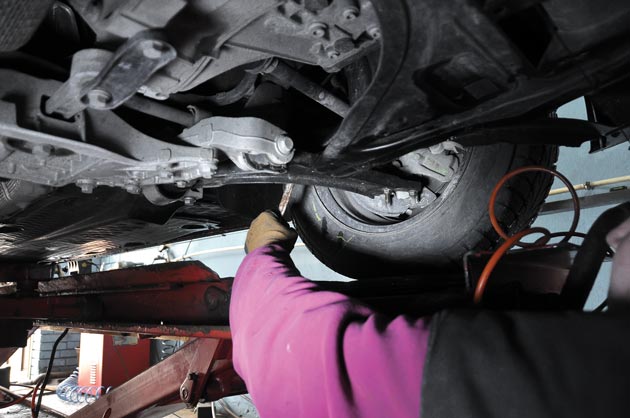
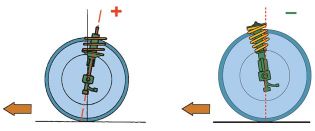
Figure 2. Positive and negative wheel crashes
When adjusting the geometry of the four-wheel suspension, angle measurements are made, but the adjustment is made only on the front-wheel suspension unless there is an option to adjust the rear-wheel geometry. In this case, the geometry of the front wheels is adjusted so that the rear wheels follow the front ones. If the rear wheel geometry is also adjusted, it is first adjusted and then the front wheel geometry is adjusted relative to the longitudinal axis of the vehicle. This type of geometry adjustment is more demanding both financially because of the higher hours of work involved and the hiring of more equipment.
The slope of the wheel
The slope of the wheel is the angle of the wheel relative to the vertical, when viewed from the front. If the upper part of the wheel is tilted outwards, it is a positive slope of the wheel, and if the upper part of the wheel is tilted inwards, it is a negative slope of the wheel. Wheel slope is used as a form of compensation due to the slope of the road surfaces (most roads have a slope due to the removal of fluid from the road surface) and the vehicle load.
The slope of the wheel is most often adjusted to the same values on both wheels located on the same axle. If the slope of the wheel is incorrectly adjusted, the tire may be irregularly worn, causing the tire tread to be worn intensely. For example, if the slope is set too high, the negative tread will be more consumed on the inside. If the tilt values are not equally adjusted for the wheels on the same axle, the vehicle will "tow" to a more positively adjusted side.
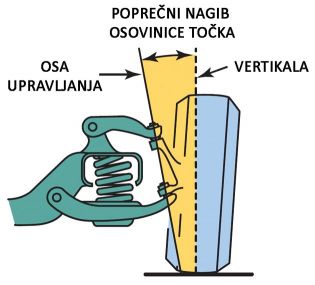
Figure 3. Example of the transverse slope of the wheel axle
The slope of the wheel changes due to the displacement of the elements of the suspension system and is limited by the guides of the suspension system. The slope of the wheel is affected by weak or damaged springs, worn ends of the clamps, worn elastic support elements, or bearings. Also, all interventions that change the height of the vehicle by means of suspension affect the inclination of the wheels.
In front-wheel drive vehicles, the inclination of the wheel is usually impossible to adjust, and, if adjustable, adjusts on the oscillating shoulders or in places where the upper legs of the spring legs are fixed to the body. If the slope of the wheels is unsuitable and the slope values do not correspond to the factory values, there is a possibility that some of the suspension elements may be worn or damaged, with the risk of damage resulting from a traffic accident.
Zatur wheels
When turning the steering wheel, the steering wheels of the vehicle also rotate. The steering wheels rotate about the axis defined by the wheel guidance system. The axis of rotation of the steering wheels is not normal to the running surface but is inclined to the vertical by a certain angle. Behind the wheels is the angle of rotation of the steering wheels as viewed from the side of the vehicle. If the tip of the pivot axis is closer to the rear of the vehicle then the wheelset has a positive value, and if the axis of the axles is closer to the front of the vehicle then the wheelset has a negative value.
The wheel closure allows stable steering. The wheel alignment values of the same axle should be identical. If the values are uneven, the vehicle will "pull" to the side where the value of the shutter is lower. If the shutter values are equal but too negative, steering will be easy and maintaining direction will be difficult. If the shutter values are equal but too positive, steering will be difficult and the steering will tend to break out of the driver's hand when crossing unevenness. Wheel alignment does not significantly affect tire wear.
Wheel alignment may be affected by loose or worn joints ("balls"), clamps and rubber bushes. Like the wheel tilt, many front-wheel drive vehicles cannot be adjusted. If the shutter values do not meet the factory requirements, this indicates that some of the suspension or control elements are worn or distorted.
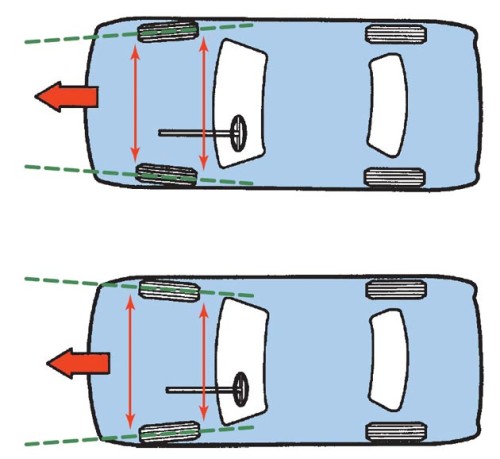
Figure 4. Example of steering wheel retraction

The transverse slope of the wheel axle
Similar to the deadlock, the axis around which the wheels turn when turning the steering wheel can also be viewed in the transverse plane, ie. from the front of the vehicle. The transverse inclination of the wheel axle is the angle of rotation of the steering wheels as viewed from the side of the vehicle relative to the vertical. The purpose of changing the angles at which this axis is is to project the weight of the vehicle onto the road surface for stability of the vehicle. This angle causes the vehicle to move slightly away from the ground when turning the steering wheel to one of the end positions. In this way the weight of the vehicle is used to effect the steering back to neutral after turning.
If the lateral inclination of the axle is different for the wheels on the same axle, the vehicle will "pull" left or right at low speeds. Most suspension geometry adjusters have the ability to measure the slope of the axle, but it does not adjust separately. The lateral inclination of the axle, which is different for the wheels of the same axle, indicates the possible displacement of the upper bracket of the spring leg or the displacement of the oscillating shoulder.
Steering Wheel Insertion
The difference in distance between the front and rear of the steering wheels on the same axle, seen from above, in the direction of movement of the vehicle is called the steering wheel retraction. There are two types of retractors, when the front parts of the wheels are closer to each other than the rear ones (also called positive retraction), and when the front parts of the wheels are farther from each other than the rear parts of the wheels (also called negative retractions). Improper roll adjustment will result in rapid wear of both tires equally.
As rear-drive vehicles "push" the vehicle, the resistances will cause the suspension guides to shift backwards, which is why most rear-wheel drive vehicles have steering wheels that are less spaced at the front than at the rear. With the front drive, the vehicle is “towed” so the suspension guides are moved forward, so on front-drive vehicles the adjustment is made so that the front wheels are more spaced than the rear ones, thus compensating for the movement of the suspension elements.
When turning the steering wheels in curves, the outer wheels move along the trajectory of a larger radius. As a result, the inner wheel must rotate at a sharper angle than the outer wheel.
Retraction adjustments are made at the ends of the control system clamps. Adjustments are made equally for both wheels on the same axles. If the settings are different, the steering wheel can be moved from the neutral position and the vehicle will "drag" left or right.
Vanja Dragosavljevic
Retrieved from: www.vrelegume.rs
Recommendation of similar texts:

Hi there, I am Mladen and I am an auto enthusiast. I started this blog years ago to help like minded people share information about latest cars, car servicing ideas, used car info, exotic cars, and auto technology. You will find helpful articles and videos on a wide variety of cars - Audi, Mercedes, Toyota, Porsche, Volvo, BMW and much more. Ping us if you have anything cool to share on latest cars or on how to make older cars more efficient, or just want to say hi!

